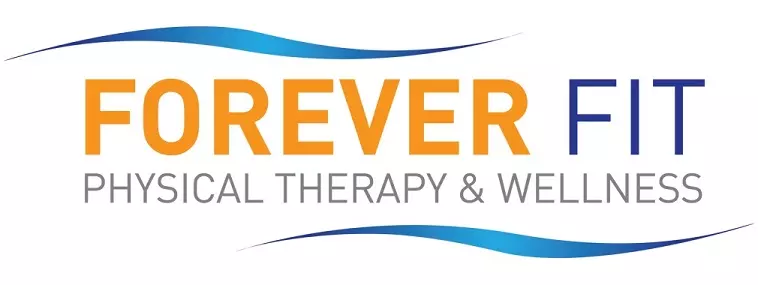Lower back pain can stop you in your tracks. Whether it’s a dull ache that sneaks in after a long day of sitting or a sharp twinge from an old injury, many people wonder the same thing: Should I use ice or heat? The answer may surprise you because there’s no one-size-fits-all solution.
At Forever Fit Physical Therapy and Wellness, we believe the most important question is this:
Which option helps you move more freely and comfortably?
Movement is key to managing and recovering from lower back pain, and both ice and heat are simply tools to help support that goal. Let’s walk through what each one does, when they might help, and how to decide what works best for your body.
Key terms explained
- Acute pain: Pain that comes on suddenly, often due to an injury or strain.
- Chronic pain: Pain that lasts more than a few weeks or returns regularly.
- Inflammation: The body’s response to injury, often causing redness, swelling and pain.
- Vascularization: Improved blood flow through movement or warmth.
Why movement matters more than choosing ice or heat
It’s tempting to lie down and wait for the pain to pass. But staying still too long can actually make things worse. When your body isn’t moving, muscles stiffen, circulation slows down, and pain can intensify. That’s why our physical therapists often focus first on restoring gentle, pain-free movement—even before addressing specific treatments like ice or heat.
One helpful approach we reference often is the PEACE & LOVE framework:
- Protection
- Elevation
- Avoid anti-inflammatories
- Compression
- Education
- Load (gradually increase activity)
- Optimism
- Vascularization (gentle movement)
- Exercise
This model emphasizes smart care choices and the importance of activity in recovery. Ice or heat can be part of this strategy, but they aren’t the end-all-be-all.
When to try ice for lower back pain
Ice is often recommended in the early stages of a new injury or sudden flare-up. It can help reduce swelling, numb sharp or throbbing pain, and calm inflamed tissues. Think of moments like:
- Twisting your back lifting something heavy
- Waking up with unexpected stiffness and swelling
- Experiencing a post-workout strain or spasm
How to use ice safely:
- Apply a cold pack wrapped in a towel to prevent skin damage
- Limit sessions to 15–20 minutes, several times a day
- Wait at least an hour between applications
- Avoid using ice if you have circulation issues or nerve damage unless advised by a healthcare provider
It’s worth noting that ice doesn’t work for everyone. Some people feel more stiff or uncomfortable afterward. If that’s your experience, it’s OK to stop using it and try something else.
When to try heat for lower back pain
Heat is often used for persistent, nagging back pain. It can help muscles relax, increase blood flow, and reduce the sense of tightness. You might consider heat therapy when:
- You have chronic back tension from sitting or standing for long hours
- Your muscles feel sore or tight
- Pain is dull and deep rather than sharp and acute
Safe ways to use heat:
- Use a warm—not hot—heating pad or a moist heat wrap
- Try a warm bath or shower to soothe muscle tension
- Limit each session to 15–20 minutes
- Avoid using heat if the area is bruised, swollen or shows signs of inflammation. Also avoid if your sensation is diminished or your skin is irritated.
As always, tune into how your body feels. If heat makes you feel worse, it might not be the right tool for that moment.
So, ice or heat? Here’s how to choose
There’s no “correct” answer that fits every person or situation. Instead, try asking:
- Does ice or heat help you move better afterward?
- Does one reduce your discomfort more than the other?
- Have you tried alternating between both?
It’s perfectly fine to use a trial-and-error approach. For instance, some people use ice after workouts or activity and heat in the morning to loosen up. Others find the opposite is true.
If symptoms change or don’t improve after a few days, that’s a good time to consult with a physical therapist.
Common myths about ice and heat
Let’s clear up a few misunderstandings:
- Myth: Ice cures inflammation. Ice can temporarily reduce inflammation-related symptoms, but it doesn’t “cure” the root cause. Movement and strengthening are more important long term.
- Myth: Heat should be used immediately after injury. Heat can actually increase swelling early on, which may worsen pain.
- Myth: You must choose one. You can use both at different times depending on what your body needs.
FAQs: Ice or heat for lower back pain
Q: How long should I use ice or heat for back pain?
A: Limit sessions to 15–20 minutes, and give your body time to recover between uses.
Q: Can I use ice and heat on the same day?
A: Yes, many people alternate them—just not at the same time.
Q: What if neither one helps?
A: If you’re not seeing any relief, a physical therapist can help pinpoint what’s going on and recommend other strategies that work better for you.
When to see a physical therapist
If your lower back pain:
- Lasts more than a few days
- Gets worse with movement
- Or interferes with sleep or daily activities, it’s time to get help.
At Forever Fit, our licensed physical therapists specialize in helping people regain mobility, reduce discomfort, and stay active. We take a patient-first approach, working with you to understand your lifestyle and goals so we can create a plan that fits.
Ready to feel better and move more freely?
Both ice and heat can be useful tools in your pain relief tool kit, but they’re not magic solutions. The goal is to use them to support better movement, which is essential for long-term relief.
Pay attention to what feels best, be open to trying both, and if you’re still unsure, a physical therapist can help you find a personalized solution that works.
Our team at Forever Fit is here to help you take the next step toward lasting relief. Give us a call or fill out our appointment request form today to get started.

